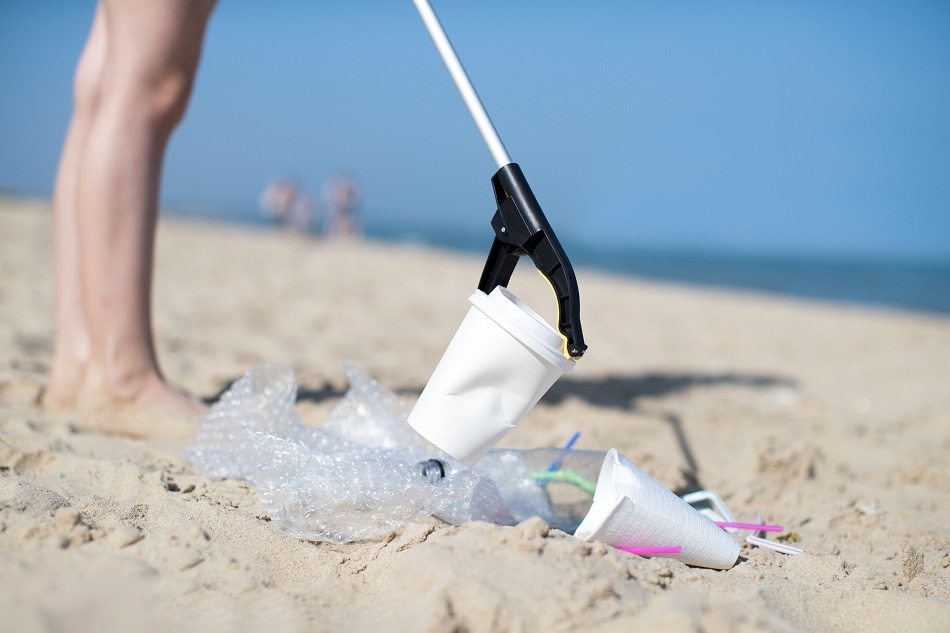
Image credit: Daisy Daisy / Shutterstock.com
In recent years the use of polystyrene has come to be something of a controversial sticking point due to the assumption it would pollute the environment for thousands of years. This presumption is based on the observation that microbes tend not to break down the substance so easily due to it being a complex structure and therefore not an efficient food source.
However, a recent study by a research team at Wood’s Hole Oceanographic Institution (WHOI) – published in Environmental Science and Technology Letters – claims that polystyrene when exposed to sunlight can be completely broken down over centuries with partial degradation taking place over the course of decades.
Right now, policy makers generally assume that polystyrene lasts forever in the environment.
Dr. Colin Ward, Marine Chemist, WHOI
These latest findings may shift previous preconceptions regarding the material and help scientists better understand the material and create solutions for dealing with it as a pollutant.
To conduct the tests the researchers submerged five commercially available samples of polystyrene into water and then exposed them to simulated sunlight. The sunlight acts on the material and subsequently breaks it down into organic carbon or carbon dioxide. It was from here the team were able to calculate that the partial break down of the polystyrene would only take decades. “Although the ring-based backbone of polystyrene makes it a difficult target for microbes, it's the perfect shape and size to catch certain frequencies of sunlight,” Dr. Ward added.
What’s more, is that the WHIO team believe that carbon dioxide released from the process would not have an impact on climate change. However, due to current concerns around plastic pollution and the scale of production of such materials and their widespread use in the food industry there is still much to deliberate on here. Dr. Ward stated, “We're not saying that plastic pollution isn't bad, just that the persistence of polystyrene in the environment may be shorter and likely more complicated than we previously understood. The chance for injury to the environment over decades is still available.”
One of the major issues regarding polystyrene is that it often finds its way into waterways as it deteriorates into a harmful microplastic, posing a risk to marine and animal life, even finding its way into the human food chain when ingested by the fish we eat. Yet, as the latest research shows, sunlight doesn’t simply break down the material physically, it chemically dissolves it into carbon dioxide. Thus, the make-up of the substance almost completely disappears from the environment.
“We used multiple methods to do this, and they all pointed to the same outcome: sunlight can transform the polystyrene into carbon dioxide,” said Dr Ward. “But we need more research to understand what happens to the other products that dissolve into water.” One determinable factor that did come out of the experiments was that various additives that change the color, physical features or flexibility of the material will have an impact on the rate at which it deteriorates.
Different additives seem to absorb different frequencies of sunlight, which influences how fast the plastic breaks down.
Chris Reddy, Senior Scientist at WHIO and Co-author on the paper
There are still great concerns across the globe regarding just how harmful polystyrene as a material can be with Costa Rica completely banning the use of the material from 2021. However, the study is not trying to influence new conceptions regarding the risk it poses to the environment merely help understand the break-down of polystyrene and its impact as a pollutant. The aim is that the research and findings can assist scientists in the future estimate the overall impact of plastic pollution and the effects its deterioration will have on the environment.
Disclaimer: The views expressed here are those of the author expressed in their private capacity and do not necessarily represent the views of AZoM.com Limited T/A AZoNetwork the owner and operator of this website. This disclaimer forms part of the Terms and conditions of use of this website.